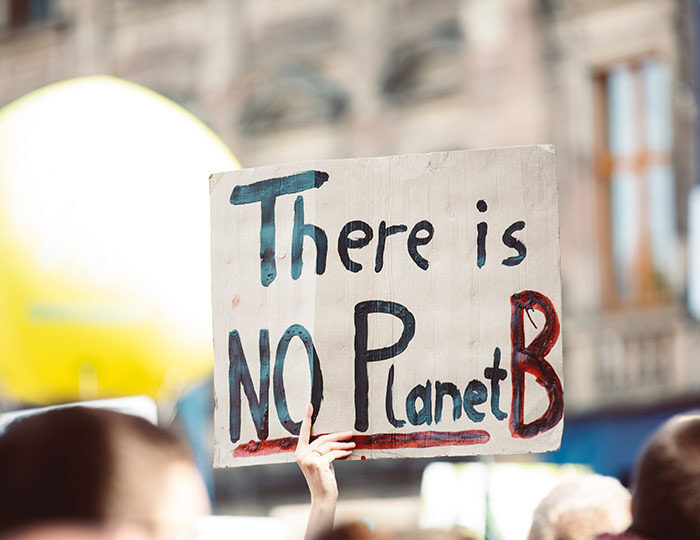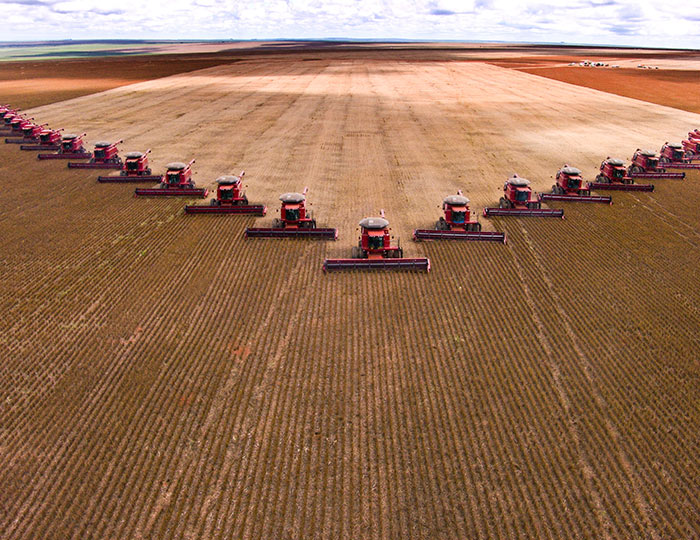NEWS • 2023-04-02
The key to deal with shocks is a variety of responses
The best chance to deal with looming crises in a globally interlinked world is by diversifying response strategies, according to study in Nature Sustainability. As societies enter an era of unprecedented turbulence at the planetary level, the authors argue that ample responses to this new reality — that is, response diversity — cannot be taken for granted and must be actively designed and managed.
Societies, economies and cultures are becoming increasingly interlinked globally. But the links are often rigid and vulnerable to shocks.
One example of such a fragile link is the Suez Canal in Egypt. On average, more than forty ships pass it daily to transport up to a billion tons of cargo from Asia to Europe and vice versa each year. 16 per cent of all shipped global food staples pass through this bottleneck. So, when the Ever Given, one of the world’s largest container ships, ran aground in March 2021 and blocked the canal for almost a week, the consequences were severe.
Linked but not flexible
The story of the Ever Given is but one of many examples of how small disturbances can cascade into large consequences in the rigid web of links of the modern world.
The world is witnessing an increasing frequency, magnitude and duration of extreme events, including pandemics, heatwaves, mega-fires, droughts, floods and storms. The associated costs are substantial in terms of economic and ecological disruption, reduced health, civil unrest, increased risk of geopolitical conflicts, human migration and, ultimately, human lives.
The multiple global crises that have manifested over the past years, be it food crises, the coronavirus pandemic, climate change or the war in Ukraine, are part of this turbulence.
While some crises can be anticipated, others strike unexpectedly. The current paradigms of lean sourcing, just-in-time and optimization (‘efficiency’) are ill-suited as they are not designed to handle unexpected new situations, such as the Ever Given incident3 and the COVID-19 pandemic, particularly when occurring in tandem. How then can societies become more resilient towards shocks that cannot be predicted?
The key is to increase the diversity with which societies can meet disturbances, according to the authors, led by Beijer Fellow Brian Walker, in an article published recently in Nature Sustainability, using the concept “response diversity” from ecology. Response diversity is a system’s variety of responses to disruptions of all kinds. In ecosystems, there are different species that perform the same process but differ in the ways they respond to a particular disturbance.
Spreading the risk
Responses can be diversified spatially or temporally. In social systems, international trade provides spatial response diversity for buffering against disruptions at a national or local scale by for instance providing alternative food sources and distribution lines. Common examples for temporal responses in human societies include storage in granaries and reservoirs, as well as banks.
For the Ever Given-incident, a spatial response would have been using alternative shipping routes, and a temporal one to have larger storage capacities at the destination which can be used to even out availability over time.
Maintaining response diversity comes with two main challenges though:
- There is a trade-off between using resources in the best way now and investing them to better deal with potential unexpected future change.
- Different shocks require different responses. Thus, decision-makers must balance trade-offs between which sorts of disturbances to prepare for.
Awareness of these trade-offs but also of the importance of response diversity itself is an important first step.
“Such fundamental design considerations, the cost of response diversity and the necessary compromises in addressing the question of ‘resilience of what to what’ must play key roles in strategies for strengthening response diversity,” says centre researcher Magnus Nyström who is one of the lead authors of the study.
A next step could be to look for win-wins, situations where response diversity can be enhanced without extra costs.
Enhancing response diversity also requires a shift in mindset. Instead of looking for the “best” practice of doing something, one should recognize that it’s a diversity of practices that might be best in the long run.
Reference: Walker, B., Crépin, A.-S., Nyström, M., et.al. 2023. Response diversity as a sustainability strategy. Nature Sustainability.
The article is a result of one the annual Askö meetings arranged by the Beijer Institute, with several Beijer Institute researchers and Beijer Fellows on the author team, as well as colleagues from Stockholm Resilience Centre and others. The Askö meetings were initated already in 1993 and has generated unique cooperation between internationally leading ecologists and economists throughout the years.
NEWS



